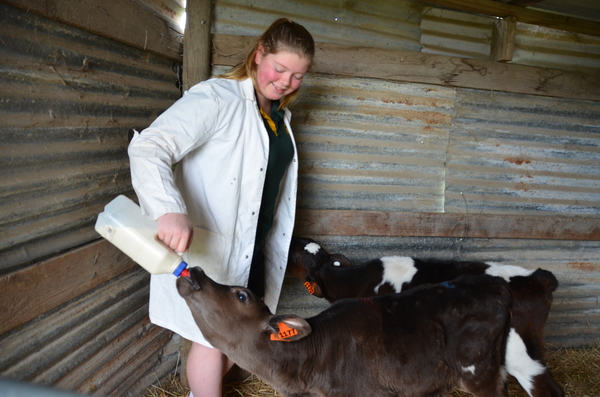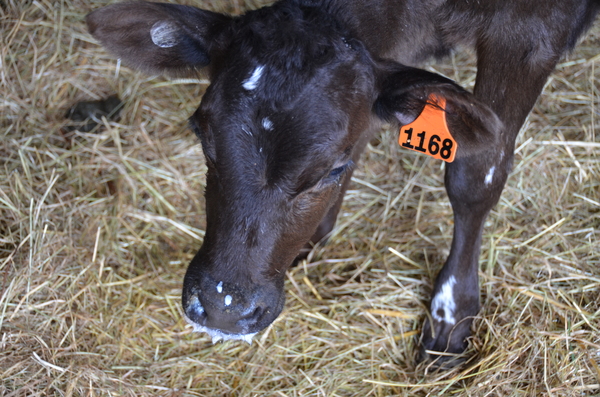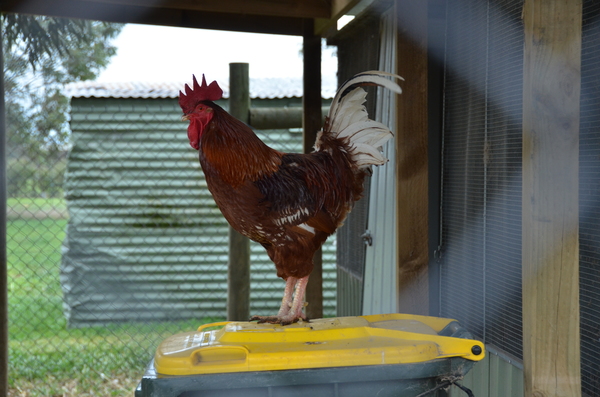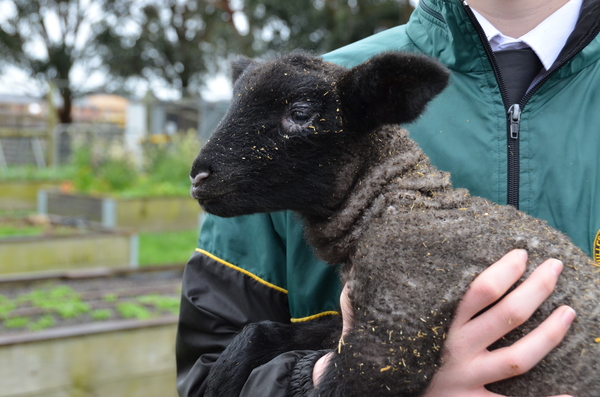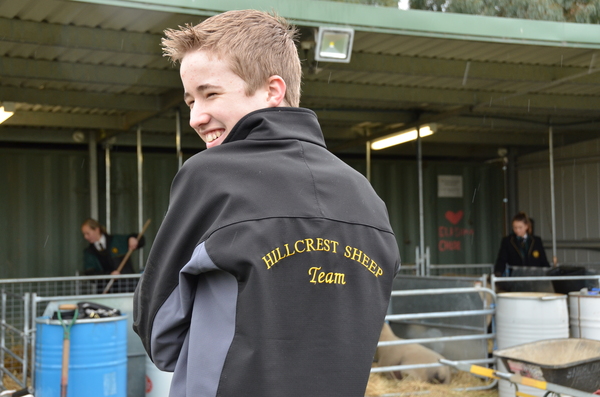
“I think it’s important that students have a connection with where our food comes from, with nature, the environment as well”
Hillcrest Christian College is opening students’ eyes to agriculture as a career path that is bursting with opportunities. Students and teacher David Lott spoke to CASEY NEILL about the value in the Clyde North school’s agriculture and horticulture curriculum.
It was a wintry Sunday afternoon.
Hillcrest Christian College student Ross, 14, wasn’t meant to be in the school farm.
“But I came down with the rest of my group because they were feeding the cows and we came down and one of the lambs was in labour,” he said.
“It was very surprising because they weren’t actually supposed to give birth for another week.
“The rest of the group was stuck out of the gate because none of the gates were open, so I walked down and when I got here one of the ewes had already given birth to one and the second one was stuck.
“That one I only had to pull out a little bit, just to help get the shoulders through, and the second one I was to completely pull out.”
How did a 14-year-old boy from the suburbs know how to deliver a lamb?
“I didn’t really,” he said.
“I called a few people, called a few different teachers.
“They said ‘grab the legs and pull’.”
The lambs were four days old and thriving when the Gazette paid a visit.
Ross has been involved with agriculture studies since he came to the school four years ago, but only joined the sheep team this year.
“A few of my friends did it and they said ‘come on down’ so I came down, enjoyed it, and here I am,” he said.
“It’s really good because you can go in the classroom and learn the theory side of it, then actually come down and practice.
“Instead of just telling you how to do it they show you how to do it and show you the different aspects of it and how it actually plays out in real life.”
Alongside the sheep there’s a large coop with several different varieties of chickens and one very cocky rooster.
“They’re all the younger kids’ responsibility,” Ross said.
“And then we have the cows at the back, which is what our program’s centred around, the Cows Create Careers program.
“That program’s an initiative by Dairy Australia to try and get young people into dairy.
“They’ll deliver four calves to a school and then you have them for two weeks and you have to do almost a presentation about it, and then you submit that presentation and whoever wins will get $1000.”
He said looking after a calf was pretty basic.
“We have to feed them twice a day,” he said.
“We have the milk powder. Each calf gets about two litres in the morning and two litres at night, so four litres a day of milk.
“Apart from that they usually take care of themselves.”
Later in the year his agriculture and horticulture, or ag hort, studies will include tending the large vegie patch.
“We’re always free to take them home and use them as we like,” he said of the plethora of vegetables on offer.
“If we want a lettuce we can pick up a lettuce, but a lot of the vegies go to the food technology program.”
The ag hort program is open to students from Years 7 to 12, but the cow project is only for Years 9 and 10.
“Younger years don’t focus as much on the commercial side of agriculture,” Ross said.
“They focus on what you can do at home, and then as you get older you go into the farming side of it.”
Madeleine is on the cow team.
“They’re a lot more playful and they’re just different when they feed,” she said, comparing the calves guzzling milk to the more placid sheep.
“They’re a lot more restless. The sheep just feed on their own,” she said.
She signed up for ag hort because she likes animals and doesn’t have any pets at home.
Classmate Amy said the cow program had opened her eyes to agriculture as a possible career path.
“I didn’t think so before because I wasn’t sure, but now that I’ve joined ag hort I’m thinking about it,” she said.
It’s exactly what ag hort teacher David Lott wants to hear.
He’s been at the school for 12 years.
“It’s been an awesome journey and lots of fun,” he said.
“It’s particularly great how the school support agriculture by letting it still run at the school, whereas it’s dropped off at other schools.
“I think it’s important that students have a connection with where our food comes from, with nature, the environment as well, that we all get through studying agriculture.
“The school’s fortunate that we can make the contrast between urban encroachment.
“That’s also another challenge to agriculture worldwide.”
There are dozens of houses being built just metres from the school boundary and the farm.
“There’s just more pressure on where our food comes from,” David said.
“If we can make that more productive, more relatable, I think that they’re really worthy goals.”
David said the kids got to do hands-on stuff like mucking out the pens, feeding the animals and seeing the babies being born.
“We get to check on how their health’s going, how they’re growing,” he said.
“We started a sheep team at the school about 18 months ago and this is our first lambing.
“I’m loving the fact that we’re getting kids down to 12 years of age joining up.
“They’re really engaged by it.
“We’ve got a growing opportunity here. It’s really exciting.”
David said educating the students about farming was “super important in a world where our food comes from and agriculture are increasingly alien to the bulk of the population”.
“And I think the career pathways are particularly exciting because a recent study showed that for 800-odd agriculture graduates nationally, there’s in the order of about 5000 to 6000 high-end jobs,” he said.
“I’m not talking about farming jobs.
“I’m talking about technical advisory jobs or within agribusiness.
“A lot of these positions aren’t being filled because there’s not enough students to agriculture, particularly at the university level.
“I think it’s an amazing opportunity.
“It’s time kids switched on to that opportunity and head off that way because it’s really a wonderful journey.”



